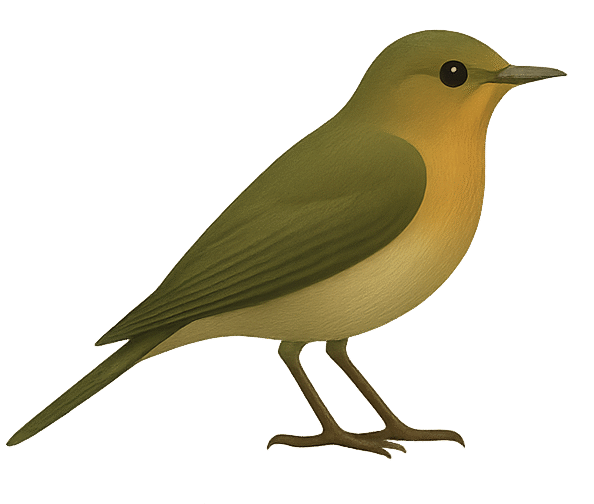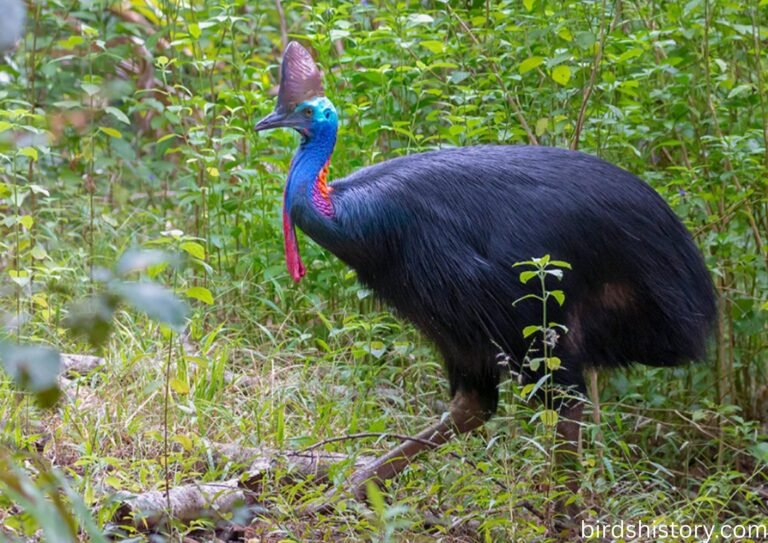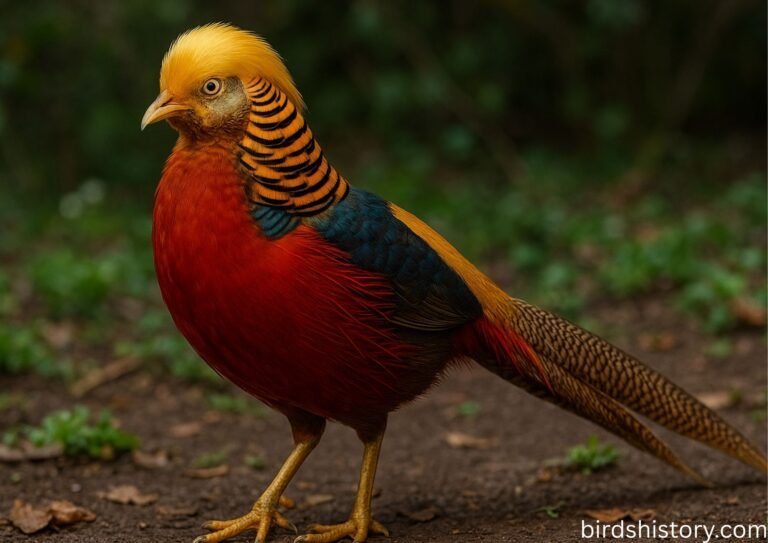Shoebill: The Prehistoric Giant of Africa’s Wetlands
Shoebill spark as much curiosity and awe as the Shoebill. Standing tall with a sharp stare and an immense, shoe-shaped bill, this bird gives the impression of being a creature from the dinosaur era. Native to the swamps and wetlands of East-Central Africa, the Shoebill is often described as a living relic—a species that hasn’t changed much for millions of years.
The most intriguing aspect of the Shoebill is its method of hunting. Unlike most Shoebill it waits completely still for long periods, staring intensely at the water until the right moment, then lunges with incredible accuracy. One surprising fact: Shoebill beak is powerful enough to catch and swallow large fish, baby crocodiles, and even small turtles.
Let’s explore this incredible Shoebill in detail—Shoebill biology, behavior, threats, and why it’s considered one of the most extraordinary Shoebill on the planet.
Shoebill Taxonomy / Classification
The Shoebill is so unique that scientists once struggled to classify it, debating whether it belonged with storks, pelicans, or herons. Today, it has its own family.
Also read: /the-resplendent-quetzal/
- Common Name: Shoebill
- Scientific Name: Balaeniceps rex
- Family: Balaenicipitidae (sole member)
- Order: Pelecaniformes
- Class: Aves
Its distinctiveness makes it a “monotypic species,” meaning it has no close relatives alive today.
Shoebill Physical Description
Shoebill is a bird of impressive proportions and striking features.
- Size: Typically 3.5 to 5 feet tall (1.1–1.5 meters).
- Wingspan: Up to 8 feet (2.5 meters), making it one of the largest wingspans among land birds.
- Weight: Between 11 and 15 pounds (5–7 kg).
- Plumage: Gray-blue feathers, giving it a ghostly appearance in the swamp.
- Beak: Huge, shoe-shaped bill up to 9 inches (24 cm) long and 4 inches (10 cm) wide, with a sharp hook at the tip for grabbing prey.
- Head: Crown feathers form a slight crest, adding to its stern look.
- Eyes: Large, pale, and forward-facing, giving it a piercing, almost intimidating stare.
- Sexual Dimorphism: Males are usually slightly larger with broader bills, but otherwise males and females look alike.
The Shoebill’s beak is its most remarkable feature, perfectly adapted to catching slippery and often dangerous prey.
Habitat and Range of Shoebill
Shoebill are highly specialized to particular habitats, which is why they are found in only a few regions.
- Continent: Africa
- The Shoebill can be found in a number of African countries, including South Sudan, Uganda, Tanzania, Zambia, Rwanda, and the Democratic Republic of Congo.
- Shoebills favor habitats like freshwater swamps, marshes, and wetlands that are rich with thick plant life.
- Key Habitat: The Sudd swamps in South Sudan and Lake Victoria marshlands are strongholds.
- Migration: Shoebills are non-migratory, staying within their swamp territories year-round.
Their dependence on wetlands means they are extremely vulnerable to habitat destruction.
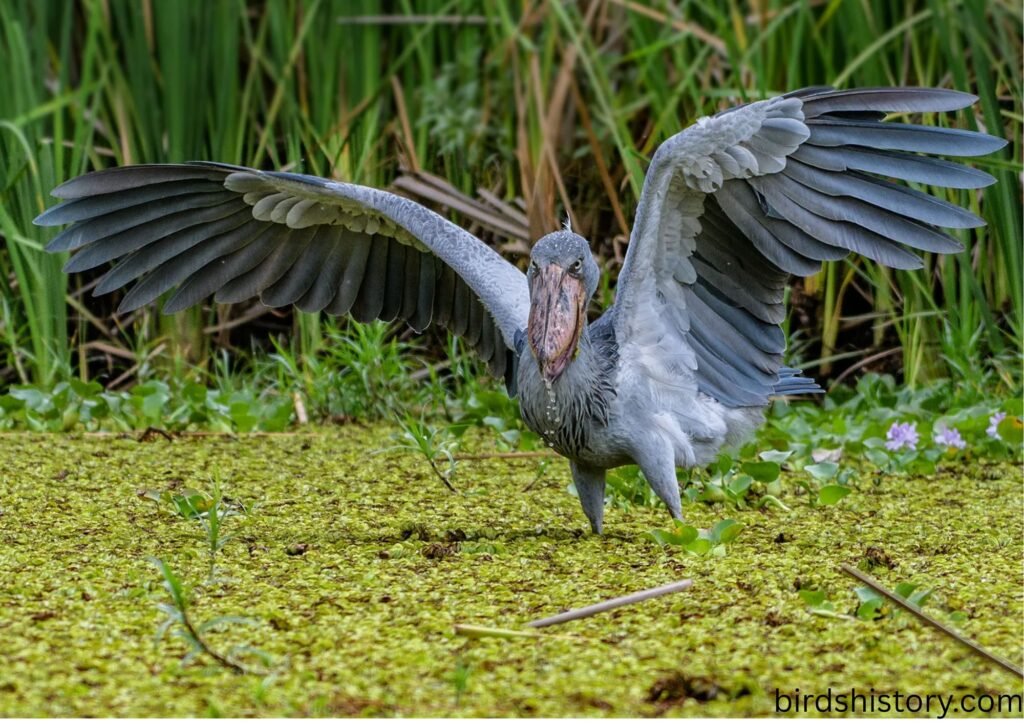
Diet and Feeding Habits of Shoebill
Shoebill is a carnivorous predator with a diet that sets it apart from most other waterbirds.
- Primary Diet Of Shoebill
- Lungfish
- Catfish
- Tilapia
- Secondary Diet Of Shoebill:
- Frogs
- Turtles
- Snakes
- Young crocodiles
- Waterbirds
- Hunting Style Of Shoebill
- Uses a “sit-and-wait” technique.
- Stands still for hours, scanning the water.
- When prey surfaces, it lunges with its massive bill, scooping water and prey together.
- After catching its prey, the Shoebill shakes its head to remove any water or plant debris before swallowing the food entirely.
- Special Adaptation: Its wide beak and sharp hook allow it to handle large, slippery, and sometimes dangerous prey.
This hunting method makes the Shoebill one of the most efficient swamp predators.
Shoebill Behavior and Lifestyle
Despite its intimidating size, the Shoebill is surprisingly calm and deliberate.
- Social Habits of Shoebill: Solitary or found in pairs. Very rarely seen in groups except where food is abundant.
- Flight of Shoebill: Slow wingbeats, almost stork-like. Can soar for long distances but usually prefers walking in swamps.
- Vocalizations: Known for bill-clattering sounds, especially during nesting season. Also produces low “mooing” or “grunt-like” calls.
- Courtship Rituals: Pairs engage in synchronized bill-clattering and display behaviors like head-bobbing and bowing.
One fascinating behavior is the Shoebill “death stare”—Shoebills are famous for standing completely motionless, glaring with intense focus, which adds to their prehistoric aura.
Reproduction and Lifespan Of Shoebill
Shoebill reproduce slowly, which is one reason their population is vulnerable.
- Breeding Season: Varies by region, often linked to dry seasons when water levels are lower.
- Nesting:
- Large platforms of vegetation, built in swampy areas.
- Nests can be up to 8 feet wide.
- Eggs: Usually 1–3 eggs, but only one chick is typically raised to adulthood.
- Incubation: About 30 days, shared by both parents.
- Chick Rearing:
- Both parents feed the chick by regurgitating partially digested food.
- Parents shade chicks from heat using their wings and even douse them with water.
- Lifespan: Around 35 years in the wild, up to 50 years in captivity.
Sibling rivalry is common, with the stronger chick often outcompeting the weaker for food.
Predators and Threats Of Shoebill
Adult Shoebills have very few natural predators due to their size and power, but eggs and chicks face more risks.
- Natural Predators:
- Monitor lizards
- Crocodiles
- Marabou storks (egg predators)
- Human Threats:
- Habitat Loss: Wetland drainage for agriculture and settlement.
- Hunting: Sometimes hunted for meat or cultural reasons.
- Illegal Pet Trade: Captured chicks can fetch high prices on the black market.
- Environmental Threats:
- Climate change reducing wetland water levels.
- Overfishing diminishing prey availability.
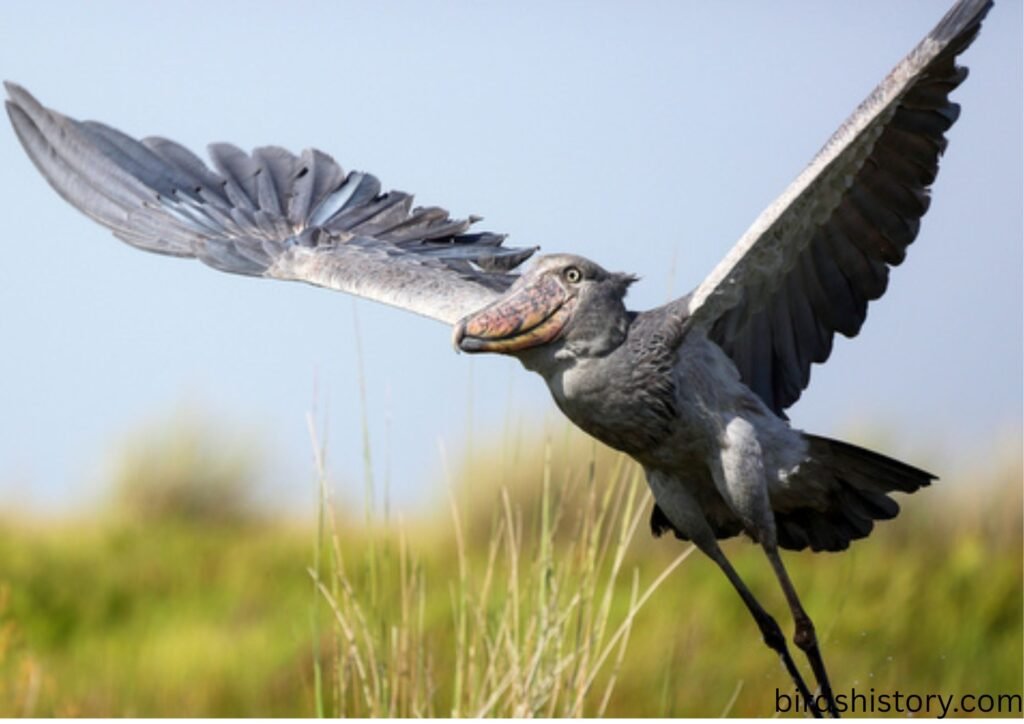
Conservation Status Of Shoebill
The IUCN has categorized the Shoebill as a vulnerable species, meaning it is at high risk of extinction in the wild.
- Population Estimate: Between 3,000 and 5,000 individuals remain.
- Decline Factors: Wetland destruction, poaching, illegal trade.
- Conservation Efforts:
- Protection of key habitats like the Mabamba Swamp in Uganda.
- Ecotourism initiatives that encourage communities to value living Shoebills more than hunting them.
- Legal protections in most range countries.
- Awareness campaigns highlighting the species’ rarity.
Continued efforts are essential to ensure this extraordinary bird survives for future generations.
Interesting Facts Of Shoebill
- The Shoebill’s bill is so powerful it can decapitate fish or small prey instantly.
- Its hunting style is often compared to a heron but with far more patience.
- Shoebills can stand motionless for hours, making them look like statues in the swamp.
- They are sometimes called “whale-headed storks,” though they are not true storks.
- Shoebills often spread their wings to cool off, resembling prehistoric pterosaurs.
- Despite their fearsome look, they are calm around humans in protected areas.
- Only one chick usually survives per nest, even if multiple eggs hatch.
- Shoebill tourism in Uganda and Rwanda has become a major eco-attraction.
- Their stare has gone viral on social media, making them a modern internet icon.
- The species has remained almost unchanged for millions of years, making it a true “living fossil.”
Conclusion
The Shoebill is one of the most remarkable birds in the world. With its towering size, enormous bill, and haunting stare, it feels like a survivor from another age. Its slow lifestyle, unique hunting method, and limited population make it both a wonder of nature and a species in need of protection.
As wetlands across Africa face increasing threats, safeguarding the Shoebill means preserving not only a bird but also the fragile ecosystems that sustain countless species. To see a Shoebill in the wild is to glimpse into Earth’s past—and to understand why every effort must be made to ensure it has a future.
FAQs About the Shoebill
1. Why is it called a Shoebill?
Because its large, broad beak resembles a Dutch wooden shoe.
2. Where do Shoebills live?
In freshwater swamps and marshes of East-Central Africa, especially Uganda, South Sudan, and Zambia.
3. How tall is a Shoebill?
They can grow up to 5 feet tall.
4. Can Shoebills fly?
Yes, though they are heavy birds. They fly with slow, powerful wingbeats and can soar.
5. What do Shoebills eat?
Shoebill diet consists mainly of aquatic animals like lungfish, catfish, and other fish, but it also eats frogs, turtles, and even young crocodiles.
6. Are Shoebills dangerous to humans?
No, they are not aggressive toward people but are strong predators in their habitat.
7. How many Shoebills are left in the wild?
Between 3,000 and 5,000 individuals.
8. Why are Shoebills endangered?
Habitat destruction, poaching, and the illegal pet trade.
9. How long do Shoebills live?
Up to 35 years in the wild and 50 years in captivity.
10. Can you see Shoebills in the wild?
Yes, they are a popular ecotourism attraction in Uganda’s Mabamba Swamp and other African wetlands.
